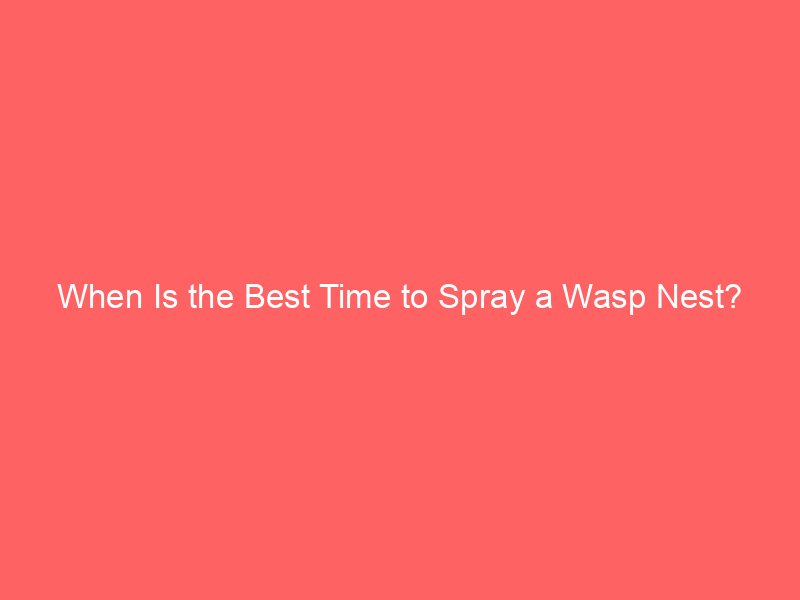Wasp nests are the last thing you want to deal with in your backyard, but sometimes, you have no choice. The thought of being swarmed by angry wasps is enough to make anyone freeze in their tracks. However, timing your attack is crucial. The best time to spray a wasp nest is during the evening or early morning, when most wasps are less active and inside their nest. Cooler temperatures make them sluggish, reducing the risk of stings and ensuring the spray reaches more wasps at once.
Why Evening and Early Morning Work Best
Wasps follow the sun. They’re most active when the sun is up and temperatures are warm. But as the day cools, they retreat to their nest. This natural rhythm is why evening and early morning are the prime times for spraying. At these times, most wasps are inside, moving slower than usual, giving your insecticide a better shot at hitting more of them. Plus, fewer wasps will be outside, ready to chase you down.
Quick tip: If you’re dealing with a nest in the spring, you’re in luck. Early nests are smaller and have fewer wasps. You can take care of them before they grow into a bigger problem.
What About Temperature?
Temperature plays a huge role in wasp activity. When temperatures dip below 50°F (10°C), wasps become sluggish. They can barely move their wings, making them less of a threat. If the forecast calls for cooler weather, that’s your perfect opportunity to strike. Cold weather reduces the likelihood that the wasps will fight back, giving you an upper hand.
Best Time of Year to Spray
Late spring to early summer is the ideal window. During this period, nests are just starting to form, and the population is still manageable. Catching them early means you stop the colony from reaching its full potential. This is key for avoiding a summer of swatting wasps and dodging stings. Spraying early can save you from a lot of hassle down the line.
How to Spray Safely
When dealing with wasps, safety is the top priority. Here’s how you can protect yourself:
- Wear thick clothing: Cover every part of your body, including gloves, a hat, and long sleeves.
- Use a long-range spray: Choose one that allows you to stay at least 15-20 feet away from the nest.
- Don’t stand under the nest: Always keep a safe distance.
- Plan your escape: Know where you’re going after you spray in case the wasps get agitated.
- No lights at night: Wasps react to light, so avoid using flashlights or bright lights, which can make them aggressive.
Multimedia Suggestion: Include an infographic showing a clock with “early morning” and “evening” marked as safe times to spray. Add a thermometer reading 50°F to indicate ideal temperatures for spraying.
Common Mistakes to Avoid
Spraying a wasp nest can go wrong if you’re not careful. Here are some common mistakes:
- Spraying in the heat of the day: Wasps are out and about in the middle of the day. You’ll miss most of them and risk being stung.
- Using lights at night: This wakes up the wasps and makes them aggressive. Stick to natural low-light conditions.
- Skipping safety gear: One sting can spoil your whole day, especially if you’re allergic. Always suit up.
Data Box: Did You Know?
Wasps are up to 80% less active below 50°F, making them far easier to control with spray. This highlights the importance of temperature when planning your attack.
Final Thoughts
Spraying a wasp nest isn’t about bravery—it’s about timing and preparation. Whether you’re dealing with a small spring nest or a more established colony, spraying at night or early morning with the right equipment and safety measures can make all the difference. Wait for dusk or dawn, suit up, and let the spray do the work. With proper timing and the right precautions, you can handle the situation with less risk, less stress, and a lot more peace of mind.
